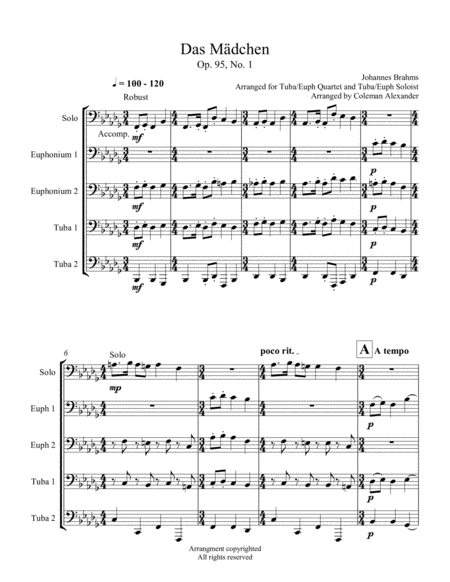Brass Ensemble - Level 4 - Digital Download SKU: A0.1025896 Composed by Johannes Brahms. Arranged by Coleman Alexander. Classical. Score and parts. 17 pages. Coleman Alexander #5709741. Published by Coleman Alexander (A0.1025896). A dark and then bright lied by Brahms about how a maiden would rather kiss a young man than an elderly one.Here are the strange lyrics. The maiden stood by the mountain slope; the mountain reflected her face, and the maiden spoke to her reflection: Truly, my face, O you my worry, if, my white face, I knew that someday an old man would kiss you, then I would go to the green mountain, pick all the wormwood in the mountains, press the bitter water out of the wormwood, and wash you, O my face, with that water, so that you would be bitter when the old man kissed you! But if, my white face, I knew that someday a young man would kiss you, then I would go to the green garden, pick all the roses in the garden, press the fragrant water out of the roses, and wash you, O my face, with that water, so that you would be fragrant when the youth kissed you!
